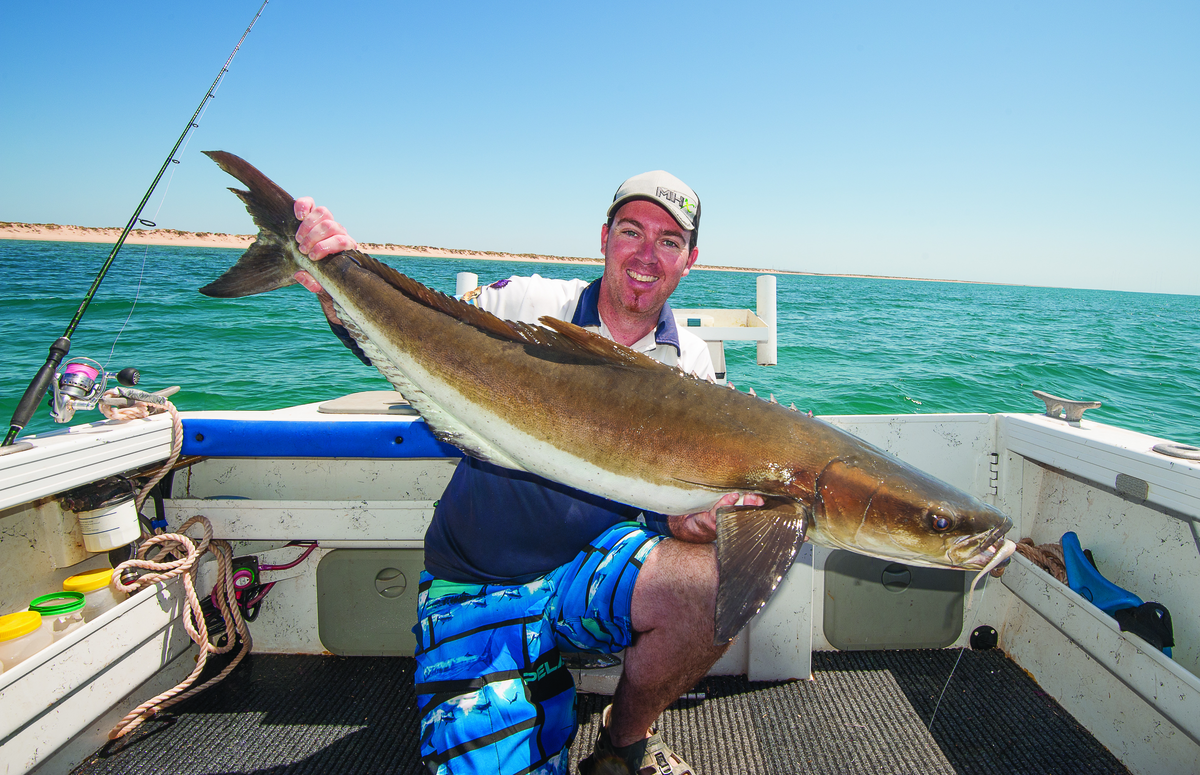
IN this month’s Fish Facts Dr Ben Diggles looks at some of the science behind the highly enigmatic cobia, or black kingfish.
COBIA (Rachycentron canadum), also known as black kingfish, are one of the more interesting and enigmatic species available to anglers fishing in our warmer northern waters. This species is found offshore and in inshore bays in tropical and subtropical oceans worldwide, and is known to be one of the fastest growing fish in the sea. Juveniles grow to over 60cm in their first year, and a one metre long fish is only around 3 years old. The maximum age recorded for a 1.6 metre long, 55kg plus cobia captured in the Gulf of Mexico was a mere 11 years of age, and their maximum size exceeds 2 metres long and 68kg. Females mature in their second year when around 80 – 90cm long, while male fish can mature in their first year.
Work done in aquaculture has found that a cobia’s food intake increases as water temperatures rise above 28 degrees celcius, with their maximum growth rates occurring in water temperatures of 28 – 32 degrees. So chances are if you stumble upon a cobia in warmer tropical waters, it will be on the chew. Indeed, while it’s well known that cobia takes lures and live fish baits readily, dietary studies have found that they actually prefer to eat crustaceans, particularly crabs, when they are available. Fortunately, when crabs aren’t on the menu, stomach content analysis has shown that cobia will eat virtually any type of fish that is locally available.
Known for their reliable association with manta rays and sharks, cobia behaviour often mirrors that of the remoras to which they are related and share a number of external features, (particularly colouration). When casting baits or lures to dark shapes below manta rays, it is usually a 50-50 bet about whether you’ll get attention from remoras or cobias. Unlike remoras however, cobia are well known for frequenting structures such as reefs, buoys and channel markers. In the Gulf of Mexico where cobia are also called ling, they are known to be particularly fond of offshore oil rigs.
Studies into the biology of cobia in Australian waters have found that, like in the northern hemisphere, they have a protracted spring and summer long spawning season. The appearance of schools of large cobia in areas such as Moreton Bay in spring and early summer are likely, therefore, to be related to spawning or pre spawning behaviour (click here to read more about how to catch Moreton Bay’s spawning cobia).
Studies in both the northern hemisphere and in northern Australia have found that spawning in cobia may occur anytime water temperatures exceed 24 degrees. Cobia are batch spawners which means that individual fish spawn a number of times throughout the spawning season, with gonad analysis suggesting they spawn as often as once every five to eight days. The number of eggs spawned by females varies with their size, with larger fish spawning up to two million eggs per batch. Over a three to four month spawning season that adds up to a lot of eggs!
Click here to read Dr Ben Diggles previous Fish Facts report on cobia.
















